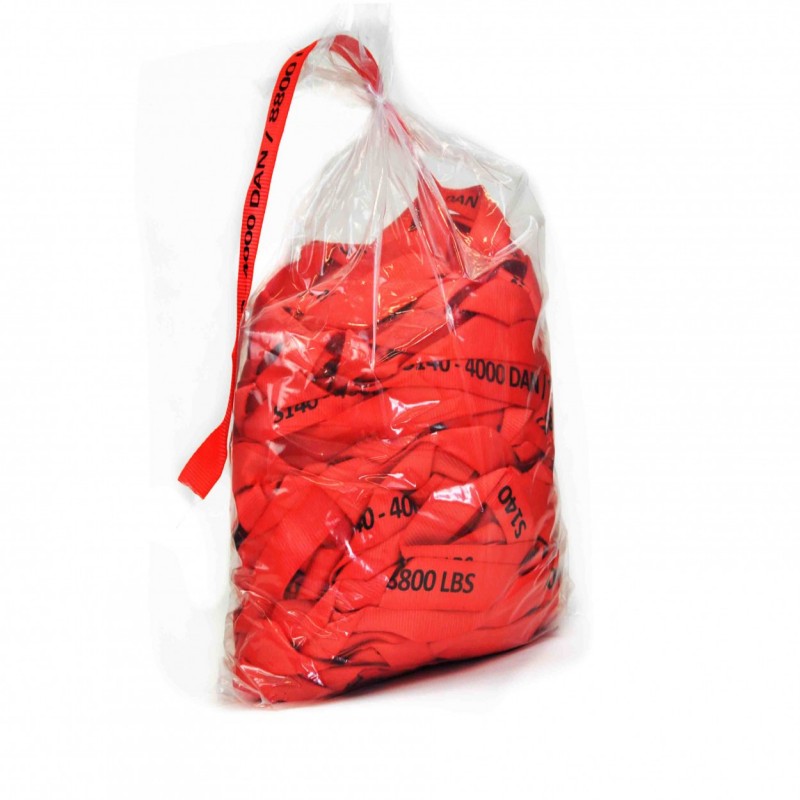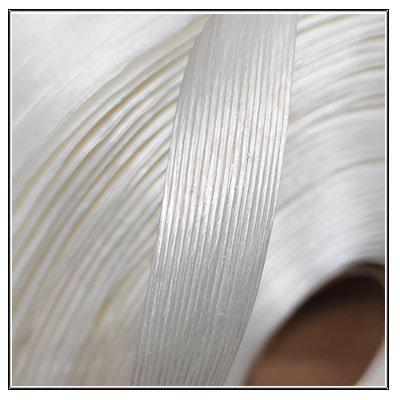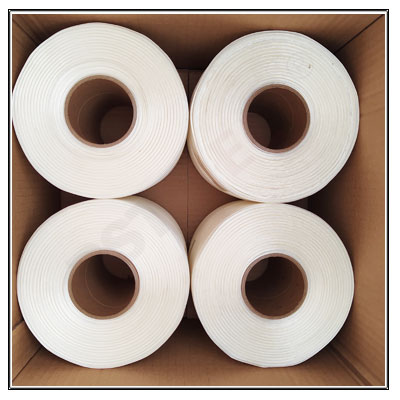Top Applications of Composite Straps in the Modern Manufacturing Industry
In the ever-evolving landscape of modern manufacturing, securing products during production, storage, and transportation is paramount. With the increasing need for efficiency, safety, and sustainability, composite straps have emerged as one of the most reliable and versatile solutions in industrial packaging. These straps, which are made from a combination of high-strength synthetic fibers like polyester and polypropylene, offer an ideal balance of durability, flexibility, and cost-effectiveness. This article explores the top applications of composite straps in the modern manufacturing industry, shedding light on their diverse uses and the advantages they bring to various sectors.
1. **Securing Heavy and Bulky Goods**
One of the primary applications of composite straps in the manufacturing industry is securing heavy and bulky items during transportation and storage. Composite straps are known for their impressive tensile strength, which makes them ideal for bundling and securing large, cumbersome products like metal coils, timber, construction materials, and industrial equipment. Unlike traditional steel straps, which can be prone to rust and are difficult to handle, composite straps provide a lighter and more flexible alternative that is both easier to use and more resistant to environmental wear.
For example, in the steel and metal industries, composite straps are commonly used to bundle metal coils or pipes. These products often require strong and reliable packaging to prevent deformation or damage during transit, and composite straps ensure that they remain securely packed without adding unnecessary weight. The ability of composite straps to maintain high tension, even with heavy items, ensures that goods stay firmly in place, reducing the risk of movement or shifting that could cause damage.
2. **Palletized Goods in Warehousing and Distribution**
The logistics and warehousing sectors rely heavily on efficient packaging solutions to keep goods organized and secure. Composite straps have become the go-to choice for securing palletized goods due to their ability to handle high tension and maintain stability over time. When products are stacked on pallets, it is essential that the packaging holds the items together securely during handling and transportation.
Composite straps are especially advantageous in environments where products need to be stored for extended periods before being shipped to their final destination. In distribution centers, where goods may be subjected to constant movement, composite straps ensure that palletized products—whether electronics, consumer goods, or industrial components—remain tightly bound, preventing product shifting and minimizing the risk of breakage.
The lightweight and flexible nature of composite straps also allows them to be applied quickly and efficiently in automated strapping systems, which further enhances throughput in large warehouses and distribution centers.

3. **Automotive Industry – Securing Parts and Components**
The automotive manufacturing industry, which deals with a vast array of parts and components, is another sector where composite straps play a critical role. Automotive manufacturers often need to secure parts such as engines, body panels, tires, and other large components that are transported between factories, warehouses, and suppliers. The strength and adaptability of composite straps make them an ideal choice for this purpose.
Composite straps are used to bundle components for ease of handling and to prevent damage during shipping. For example, automotive parts such as engine blocks or transmissions are often secured with composite straps to ensure they do not shift or become misaligned during transit. These straps help maintain the integrity of the parts, preventing scratches, dents, or other forms of damage.
Additionally, composite straps are more resistant to the elements than traditional metal bands. This is particularly important when shipping automotive parts to global markets, where weather conditions can vary dramatically. Composite straps withstand exposure to moisture, UV radiation, and extreme temperatures without losing their strength or integrity, making them an ideal packaging solution for automotive manufacturers.
4. **Packaging of Consumer Electronics**
In the consumer electronics industry, where products are often delicate and must be carefully protected during transportation, composite straps provide a safe and efficient way to secure items. Products such as televisions, computer monitors, smartphones, and home appliances require secure packaging to avoid damage due to vibrations, impacts, or shifting during transit.
Composite straps are used to secure these items tightly within their packaging, ensuring that they are protected from the common hazards of shipping. The smooth, non-abrasive surface of composite straps prevents damage to sensitive electronics, which is crucial in preventing scratches, dents, or cracks in fragile products. In addition, composite straps are less likely to snap or break under pressure, ensuring that the products remain secured throughout the supply chain.
By using composite straps, manufacturers can reduce the likelihood of product returns due to damage during shipping, improving both customer satisfaction and brand reputation.
5. **Wood and Paper Products**
The forestry, wood, and paper industries require efficient and secure packaging to ensure that raw materials and finished products are transported without damage. Composite straps are commonly used in these industries to bundle and secure products like wooden planks, timber logs, paper rolls, and cardboard products. The strength of composite straps helps keep these products in place during transport, while their lightweight nature makes them easier to handle than metal straps.
For example, in the timber industry, composite straps are used to bundle logs or planks together for easier stacking and transportation. These straps provide the necessary tension to hold the wood securely, even when exposed to the elements during long shipments. In the paper industry, composite straps are used to secure large rolls of paper, preventing them from unrolling or shifting during transit.
Composite straps also play a role in preventing damage to wood and paper products during the handling process. Their ability to maintain a constant tension helps prevent crushing or warping, ensuring that products reach their final destination in optimal condition.

6. **Agriculture – Securing Produce and Agricultural Equipment**
The agricultural industry has seen a significant shift toward using composite straps for packaging and securing produce, equipment, and tools. Composite straps are increasingly being used to bundle fruits, vegetables, and other perishable goods for transport. Their strength and flexibility make them ideal for securing items like crates of produce, boxes of frozen goods, or packaged grains.
In addition to securing perishable goods, composite straps are also used in the agricultural sector to package agricultural machinery and tools. For example, composite straps are commonly used to bundle farming equipment such as plows, tractors, or irrigation components, keeping them secure during long-distance shipments to remote farming locations.
The agricultural industry also benefits from the environmentally friendly nature of composite straps, as many of these straps are made from recyclable materials, helping farmers meet sustainability goals while still maintaining robust packaging solutions.
7. **Building and Construction Materials**
In the construction industry, where large, heavy materials are often moved from one location to another, composite straps provide a secure and efficient packaging solution. Materials such as concrete pipes, insulation rolls, tiles, and steel beams require robust and reliable packaging to ensure safe transportation. Composite straps are used extensively to bundle these materials, keeping them tightly secured and preventing damage during transport.
For example, in the construction of buildings and infrastructure, composite straps are used to secure large bundles of steel reinforcement bars, preventing them from tangling or shifting. The straps provide enough tension to hold the items together while being lightweight and easy to apply, making them a highly effective solution for both construction suppliers and contractors.
Composite straps also offer a safer alternative to metal straps, which can pose risks to workers during handling. The smooth, non-abrasive surface of composite straps reduces the risk of injury, making them a safer option for workers in the construction and manufacturing industries.
Conclusion
The use of composite straps in the modern manufacturing industry is diverse and far-reaching, with applications spanning a wide range of sectors, including automotive, electronics, construction, agriculture, and logistics. Their strength, durability, flexibility, and environmental benefits make them the ideal choice for securing goods and ensuring that products remain intact during storage and transport.
By offering superior protection, reducing costs, and enhancing efficiency, composite straps have become an indispensable part of the packaging and shipping process across industries. As manufacturing processes continue to evolve and become more focused on sustainability and safety, composite straps will undoubtedly play an even more significant role in shaping the future of industrial packaging.





